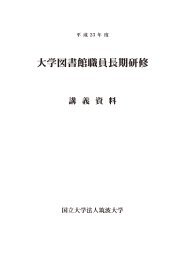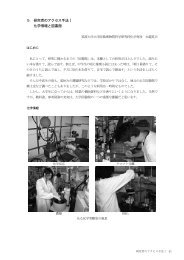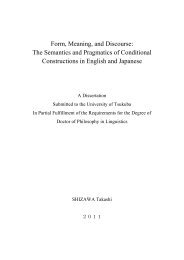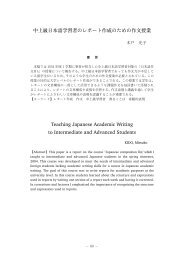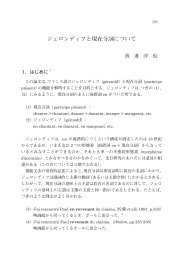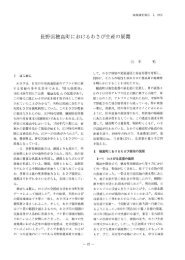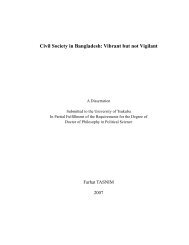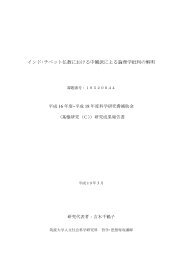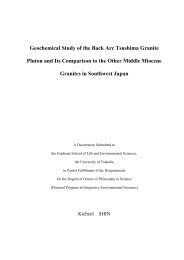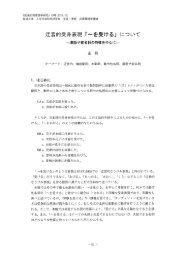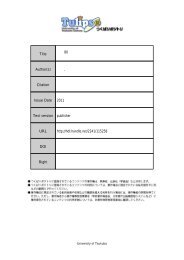Gamma Rays and CarbonIon-Beams Irradiation for Mutation ...
Gamma Rays and CarbonIon-Beams Irradiation for Mutation ...
Gamma Rays and CarbonIon-Beams Irradiation for Mutation ...
You also want an ePaper? Increase the reach of your titles
YUMPU automatically turns print PDFs into web optimized ePapers that Google loves.
Gy. ‘Williams’ <strong>and</strong> ‘Orito’ could not tolerate radiation dosages more than<br />
200 Gy. However, the height in ‘Williams’ remained similar even when<br />
doses were increased to 50, 100 <strong>and</strong> 150 (Fig 4, B). Difference between<br />
‘Cavendish Enano’ <strong>and</strong> ‘FHIA-01’ was significant at the 5% level (P≦<br />
0.05), <strong>and</strong> those between ‘Williams’ <strong>and</strong> ‘Orito’ was significant at the 1%<br />
level (P ≦ 0.01). ‘Cavendish Enano’ across dosages was significantly<br />
difference (P≦0.05).<br />
Fig. 4, C shows the relationship between survival rate <strong>and</strong> doses<br />
<strong>for</strong> each cultivar. The survival ability decreased across the dosage. The<br />
survival rate of ‘Cavendish Enano’, ‘FHIA-01’ <strong>and</strong> ‘Orito’, at 50 Gy was<br />
significantly different from that of ‘Williams’ with higher survival rate<br />
(Table 3). However, when dose was increased to 100 Gy, ‘Cavendish<br />
Enano’ had significantly higher survival rate than ‘Williams’, ‘FHIA-01’<br />
<strong>and</strong> ‘Orito’. At 150 Gy, the survival rate in ‘Williams’ remained high,<br />
while it was still low in ‘Cavendish Enano’, ‘FHIA-01’ <strong>and</strong> ‘Orito’. Above<br />
200 Gy, ‘FHIA-01’ showed a relatively high survival rate, over the rest of<br />
the cultivars tested. A dosage of 500 Gy resulted in the death irrespective<br />
of cultivars used, except in ‘FHIA-01’.<br />
Fig. 9, A <strong>and</strong> B, (‘Cavendish Enano’ <strong>and</strong> ‘Williams’,<br />
respectively) <strong>and</strong> Fig. 10, A <strong>and</strong> B (‘Orito’ <strong>and</strong> ‘FHIA-01’, respectively)<br />
show the survival rate (%) <strong>for</strong> LD50 as an analysis to assess acute<br />
sensitivity in the four cultivars. LD50 was highest in ‘Williams’ (83.94%),<br />
<strong>and</strong> lowest in ‘Orito’ (65.0%). Plus/minus (±) 5% was aggregated to each<br />
LD50 values of each cultivar to select the optimum irradiation doses of<br />
<strong>Gamma</strong> rays. Subsequently, the optimum doses <strong>for</strong> ‘Cavendish Enano’<br />
ranged from 74.0 to 81.8 Gy, ‘Williams’ from 79.7 to 88.1 Gy, ‘Orito’<br />
from 61.8 to 68.3 Gy, <strong>and</strong> ‘FHIA-01’ from 73.2 to 80.9 Gy. Fig. 11 shows<br />
36



